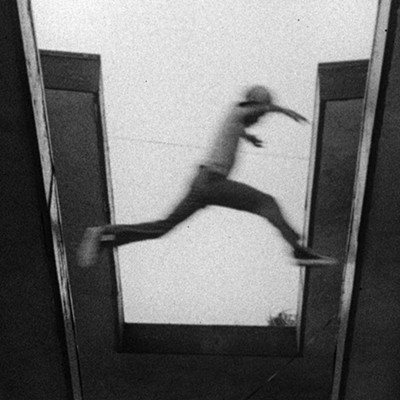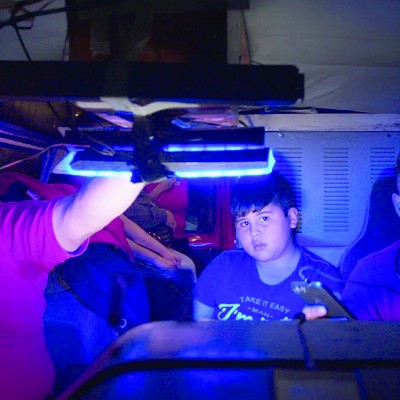Last week, Wittig talked about her involvement in the new film.
Q: What is your previous collaborative work with The Girl's filmmaker, Sande Zeig?
A: The first thing we worked on together was the book Lesbian Peoples: Material for a Dictionary, and we went on to work together on a number of projects. The Constant Journey, a play, was staged at Paris at the Théâtre de Ronde-Pointe Champs d'Élysée. Since then we have been working on screenplays; we have just finished a script and are working on a new one.
Q: "The Girl" is your first story in English.
A: Yes, for me "The Girl" was an exercise in English. I started writing the story lots of times, long ago, before the story became so simplified, and nondramatic. I wrote at least 10 drafts. Finally I decided upon a device, and that was the idea that the words should create suspense. Sande Zeig transformed that suspense into images and sounds.
Q: Although they are French, the women in the film don't speak it. The dialogue in the film is decidedly unnaturalistic, poetic.
A: This is like a play, like make-believe. For it is fun to speak English when one is French. In my story my characters were speaking in English.
Q: In the film, the only time the characters speak in French is when the violent characters of the Girl's "straight world" are involved. The language seems not to be a part of the women's world, but a sign of the dangers of the other one.
A: I agree.
Q: Can you talk about the film's use of Paris as a location?
A: We chose the locations in Paris so that people wouldn't recognize it. An impossible geography, with a five-minute run between Pigalle and the Fifth Arrondissement. It's a Paris for everybody; a neutral Paris, without the monuments that signal it. It could be any city, except that everyone knows it's Paris. A timeless Paris, bright and white, full of joy, like an Italian city.
Q: Paris seems less important than the spaces in which women and men look at one another, work, love, and find one another. There are private spaces of corridors, bedrooms and nightclubs where exchanges between the two characters--and everyone else--circulate. That created a very cinematic (and also theatrical) sense of space. What did you and the director want to do with that space?
A: As I said, I am fascinated by Paris as a timeless city where the space doesn't line up. Neither Sande Zeig or I wanted linearity in terms of telling the story as well. My story jumps more than the film; I write in fragments, and it was a challenge for Sande Zeig to film that. But neither of us wanted linearity.
Q: When you were working on it, how did Sande Zeig and you approach this as a lesbian film?
A: I think The Girl shows that it is the other way around, for lesbians and homosexuals--it is the straight world that looks queer. We talked about the image being crooked, expressing a sense of distorted space, like in a German expressionist film.
Q: Representing female sexuality, and lesbian sexuality especially, are topics passionately debated. Did you and Zeig work with particular aims or ideas?
A: As for the way bodies are depicted in The Girl, sometimes you don't know what part is what. It's a way of not trivializing the body and making it more abstract.
But the most important idea of the story and the film is that of freedom in relationships. One should stay with the other only minute by minute; it is a contract that has to renewed. It should not exceed an hour, or a week at the most. That means that the painter and Bu Savé [her live-in lover] are just going through this process. The relationship between the painter and the Girl is just a heterosexual affair in their world, just a film noir.
Q: What do you want viewers of Zeig's film to take away with them?
A: I think readers and viewers have to do their own work. I define this work as reading or seeing without prejudice, without preconceived ideas--they should come to the text as blank slates, and make their own interpretations from that point on. I believe in the work of readers and viewers. They cannot be passive; they have to make their way through a work. At its best, a work should produce a shock. Maybe a shock of recognition--which is not the same thing as representation, and maybe after that, the viewer/reader can work with that film for herself/himself.
I remember a line from Nathalie Sarraute [one of the leading figures of the nouveau roman]: "The task of the writer is to create new forms." That is my way of approaching writing, and I think Sande Zeig approaches her work the same way. She tries to have a unique vision.










